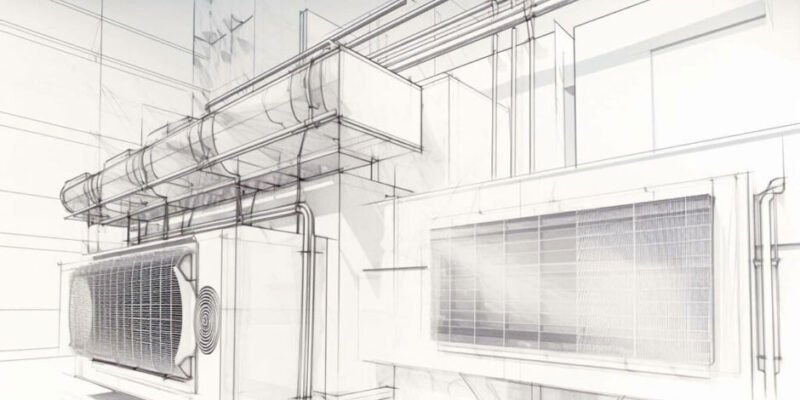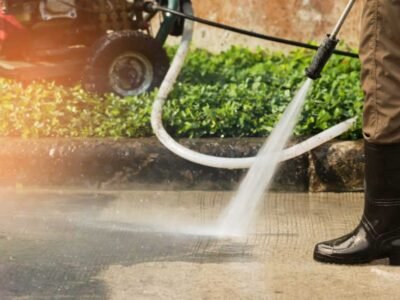In the wide universe of indoor air management and environmental comfort, ventilation is an essential pillar. Ventilation, the process of circulating air within indoor spaces and replacing indoor air with outdoor air, holds paramount importance for maintaining air quality, guaranteeing a healthy indoor environment, and ensuring a comfortable atmosphere conducive to living, working, and leisure. It is not simply about blowing air around—it’s an influential factor in the quality of our life, our health, and our productivity.
Regrettably, ventilation often becomes a neglected aspect in several buildings, homes, and other indoor spaces, resulting in environments that are not just uncomfortable, but unhealthy too. The stale, stuffy air often acts as a breeding ground for pollutants, adversely impacting our health and overall well-being. This is where modern HVAC technologies, including PTAC units, prove instrumental in maintaining efficient ventilation and thus preserving a healthy and comfortable indoor climate.
The Necessity of Ventilation
Delving into the significance of ventilation, it primarily ensures a regular inflow of fresh air and simultaneously expels stale air out of indoor spaces. This significant reduction in the concentration of indoor pollutants like volatile organic compounds (VOCs), allergens, and particulate matter is facilitated by proper ventilation. Consequently, this leads to decreased risks of allergies, respiratory conditions, and other health problems that are often attributed to subpar indoor air quality.
Furthermore, besides removing pollutants, apt ventilation helps regulate temperature and maintain optimal humidity levels, thus making indoor spaces more comfortable. In periods of warm weather, ventilation helps in diluting the hot air and during times of excessive humidity, it aids in reducing moisture levels, thereby warding off problems related to mold and mildew. HVAC solutions not only provide heating and cooling functionality but also ensure efficient ventilation, making them a smart choice for preserving comfortable indoor environments.
Natural vs Mechanical Ventilation: A Comparative Analysis
Primarily, there are two types of ventilation—natural and mechanical. Natural ventilation is the uncontrolled flow of air through doors, windows, vents, and other openings. It hinges on architectural design, wind speed, and temperature differences. While it is cost-effective and environmentally friendly, natural ventilation doesn’t offer the level of control and efficiency that mechanical ventilation can provide.
In contrast, mechanical ventilation uses equipment such as fans, ducts, and advanced HVAC systems like PTAC units to control the air’s flow. These systems offer superior control over the ventilation rate, ensuring consistent air quality and comfort levels. Mechanical systems can filter and condition the air, offer ventilation in spaces devoid of windows or other openings, and easily adapt to meet changes in ventilation requirements.
Effective Strategies for Improving Ventilation
Here are some practical strategies to enhance ventilation:
Regular Maintenance of Ventilation Systems: An efficient ventilation system necessitates regular maintenance for its optimal functioning. This involves cleaning, replacing filters, checking for any damages or leaks, and ensuring the system is working at its best.
Increasing Natural Ventilation: When circumstances allow, keep your doors and windows open to let fresh air in. This practice is particularly beneficial in areas where pollutants are more likely to be produced like the kitchen or bathroom.
Usage of Ventilation Fans: Installing and using exhaust fans in the kitchen, bathrooms, and other areas prone to moisture and pollutant production can greatly enhance ventilation.
Consideration of Air Flow: When designing or rearranging your space, be mindful of the direction of airflow. Arrange your furniture and other objects in a way that they do not hinder air circulation.
Use of Air Cleaners: While air cleaners cannot substitute ventilation, they can supplement it by reducing airborne pollutant concentrations.
Conclusion
In conclusion, proper ventilation is vital to maintaining healthy and comfortable indoor spaces. Whether it’s achieved through natural methods or mechanical systems, ensuring a constant supply of fresh air can dramatically enhance the quality of your indoor environment, thereby promoting better comfort and well-being. Understanding the importance of ventilation and adopting strategies to improve it can help create healthier and more enjoyable living, working, and leisure spaces.
Ventilation might seem like a mundane aspect of building design and maintenance, but its impact on our health, comfort, and overall quality of life cannot be understated. The right ventilation strategies can make our homes and workplaces not just more comfortable, but healthier places to be. In the long run, the investment in proper ventilation will always be worth it—for your health, your comfort, and your peace of mind.
















Comments